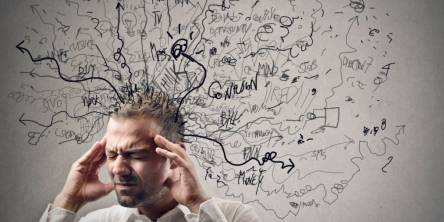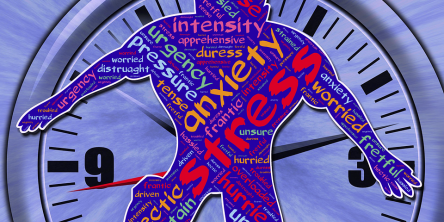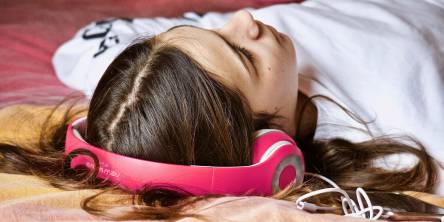How Does Deep Touch Pressure Stimulation Help Reduce Stress?

Maybe it’s unconscious, but sometimes it’s easy to crave the warmth of a good hug. Even if you’re the type to shy away from skin contact, one cannot deny the comfort that comes from being bundled up and held. This phenomenon is called deep touch pressure stimulation. What is it? And how does deep touch pressure stimulation help reduce stress?
There really isn’t any better way to describe it. It’s a hug. It’s something that drapes over your shoulders, comes in contact with your skin, and presses against your body in a way that makes you feel safe.
That might have come out a bit too dreamy there, but that’s exactly what it is! It’s a process that none of us can see happening, but it’s something that we can reap the benefits from nonetheless. When you’re enveloped in this kind of hold, everything just feels calmer. It’s easy to forget what’s going on and just relax.
But enough of the metaphors, let’s get down to the science of it all.
HOW DOES DEEP TOUCH PRESSURE STIMULATION WORK?
The first thing that we’ll cover, is the how. How does it work?
Although the science is easy to push aside, it’s actually fairly interesting. It makes you realize just how complicated the human body actually is. Whenever we see, hear, smell, taste, or feel something it translates the information in a moment’s notice - allowing us to react.
Deep pressure stimulation works a lot like everything else. A stimulus is introduced, the neurons transmit the message to the brain, and then hormones are released to react to the stimulus. It sounds a bit complicated with all the medical jargon, but it’s simple enough that it can be condensed into a three-part process.
For deep touch pressure stimulation, the stimulus is a constant. By that I mean, it’s always the feeling of being touched. Where the touch comes from can vary of course - it can be from a person or something more inanimate like a fluffy blanket.
However, the process stays the same. Pressure is applied to certain parts of your skin, and the body sends this sensation to the brain to translate. Then, the brain will send out good hormones like serotonin or dopamine - to make you feel happy and safe.
That’s all well and good, but how does it work against stress specifically?
Well, in order to answer that question, we’re going to have to talk about stress first.
STRESS
Although it might seem unnecessary to introduce stress, it’s actually important in order to explain the whole process. We all know what stress is. We’ve felt it, experienced it, let it crush us in moments of weaknesses, etc.
It’s not a good feeling, and that’s enough to let us remember exactly what it is.
However, have you thought about the how?
Let’s take a look at this example. Have you ever gotten almost hit by a car? You’re walking down the street, and nothing is wrong. Perhaps you’re laughing along with one of your friends or listening to music whilst you walk back home - you’re calm and peaceful. Maybe even smiling, or singing out loud.
But then suddenly - you see this big bright light coming straight at you. Your eyes get wider, your pupils dilate, your breath stutters as your mouth gasps air, and you can feel the loud thrum of your heartbeat and the blood rushing through your veins.
It all happens in an instant. Your body is pumping out adrenaline like crazy, and you react - you jump away.
That’s how stress works. Of course, unlike deep touch pressure stimulation, the stimulus can vary. It needn’t be a car, it could be a fight with a spouse or even a failed grade at school. Your body produces stress hormones like cortisol or epinephrine and it makes you feel… stressed.
So, now that we’ve covered both deep touch pressure stimulation and stress, let’s answer our initial question.
HOW DOES DEEP TOUCH PRESSURE STIMULATION HELP REDUCE STRESS?
Much like the other two processes that we’ve explained, it’s not that complicated.
In the case of stress and deep pressure stimulation, it’s just a matter of replacing the hormones that your brain is producing. For example, in this study by Krauss conducted in 1987, therapists tested deep pressure touch (DPT) on children and adults alike.
The subjects for this study all suffered from hyperactivity. Their brain worked against them constantly. It kept them awake, it kept them distracted, and it made them anxious. They tested DPT on these patients to figure out how it might affect them.
They found, that people who were administered the DPT were a lot more relaxed than those that were not - this, is what ultimately led to more discoveries later on.
With modern science came the ability to test out its effects on anxiety. Like this study, which was conducted by Chen in 2011. It found that applying DPT produced a “...calming effect” on the subjects of the experiment.
That probably sounded a bit complicated but to simplify the whole thing - think of it this way. The weight of DPT tells your body to relax, it sends out happy hormones and stops the production of stress hormones that make you feel anxious. That’s really all there is to it.
By cuddling up with someone or something, you’re replacing the bad - with the good!
FINAL THOUGHTS
The brain is one of the most complex things known to mankind, and yet - it’s a big part of what makes us human. It’s what allows us to react to things like a car going at 75 miles an hour, or a sound that wakes you up when you’re asleep.
It can do bad things sometimes. It can keep you up at night after you’ve had a bad day, keeps you frustrated and makes you even more stressed.
However, solving the problem can be as easy as cuddling up with someone you care about. Maybe even bundling up inside of a pile of weighted blankets. Just like that, it can shut down the looming storm that comes with stress, and make all your worries go away.
Similar Articles
Stress can feel woven into daily life. Work stacks up, home needs your care, the news hums nonstop, and your phone never sleeps. Feeling stretched thin is a human response—not a failure.
Everyone has a bad day, a bad week, or even a bad month sometimes, and it’s usually fairly easy to spot the signs. Maybe you spend more time doom-scrolling the news or social media or find yourself binge-watching true crime docs or old comfort shows.
Research of the National Sleep Foundation shows that 90% of us use technology minutes before bedtime. As friendly as technology seems in our daily lives when it comes to sleep, our bodies and technology are not completely compatible
Sress is bound to us. Whether you are studying or working it's always going to be there. In fact, a little stress can be a good thing. As you probably know, there's good stress and bad stress and as you've probably already figured out the bad is the one that we are experiencing daily.
You’ve likely heard about all of the great benefits of using white noise machines for a variety of different situations. The benefits of white noise have been praised by health professionals, who consider white noise a great way to boost focus, reduce anxiety, improve sleep, and promote an overall better sense of well-being.
Everyone these days is trying to maintain a balance between work and their personal life. People are so caught up in their office work or universities that very few can take out time for themselves. Everyone wants their work to end quickly so that they can go home and relax.
How much to eat and what to eat is a major debatable question that many people ask. To look for answers, these people then visit websites that provide sleeping tips pertaining to food. You may also find books on this particular topic. These books are for people who want an in-depth knowledge of the topic.
Statistics show that up to 10% of teenagers and about 40% of adults suffer from one type of stress related anxiety disorder or another. Mental health has been generally overlooked while it is actually one of the main causes of physical illness.
According to the Carnegie Mellon study, published in the 2012 edition of the Journal of Applied Psychology, Americans are year after year feeling increasingly stressed









